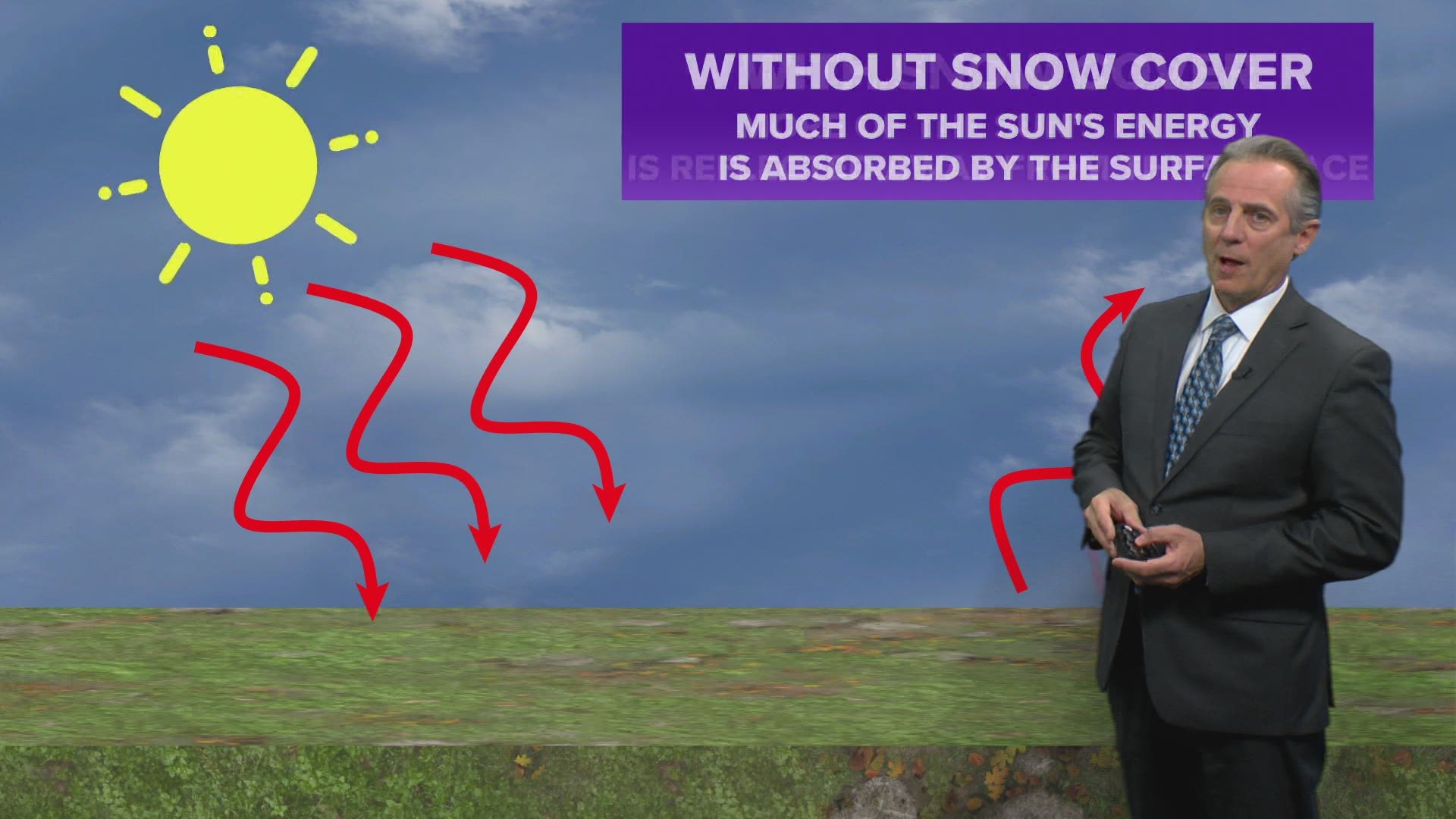DES MOINES, Iowa — Ever wondered why the asphalt gets so hot in the middle of summer? Or why temperatures have a difficult time warming up when a fresh blanket of snow coats the ground in the winter?
Both of these phenomena can be attributed to an atmospheric property called albedo.
Each day, some sunlight is absorbed and some is reflected back into the atmosphere.
The National Weather Service defines albedo as the relative amount of light that a surface reflects compared to the total sunlight that falls on it.
Surfaces that reflect a lot of light falling on them are bright, and are described as having a higher albedo. Snow is an excellent example of a surface with a high albedo.
On the other hand, surfaces that do not reflect much light are dark, and are described as having a lower albedo. An example of this is asphalt.
More specifically, albedo is a non-dimensional, unitless value that indicates how well a surface reflects the sunlight.
Meteorologists identify albedo on a scale of 0 to 1. A value of 0 means the surface absorbs all incoming energy, while a value of 1 means a surface reflects all incoming energy.
Asphalt has a low albedo, especially compared to concrete, as its black surface absorbs far more energy than it reflects.
Snow has a very high albedo, however. The white color of snow reflects as much as 90% of incoming solar radiation.
Sea ice and ocean water tend to fall toward the middle of the albedo measurement scale, with sea ice varying between 0.5 to 0.7 and ocean water at a 0.06.
This means the ocean reflects only 6% of incoming sunlight, and then absorbs the rest.
Conversely, sea ice reflects 50-70% of all incoming energy, absorbing less and therefore keeping the surface cooler overall.
Albedo is an important property to consider when meteorologists create forecasts.
In the winter months, for instance, meteorologists examine how a fresh pack of snowfall will inevitably keep temperatures on the colder side, regardless of how much sunshine is expected during the day.

